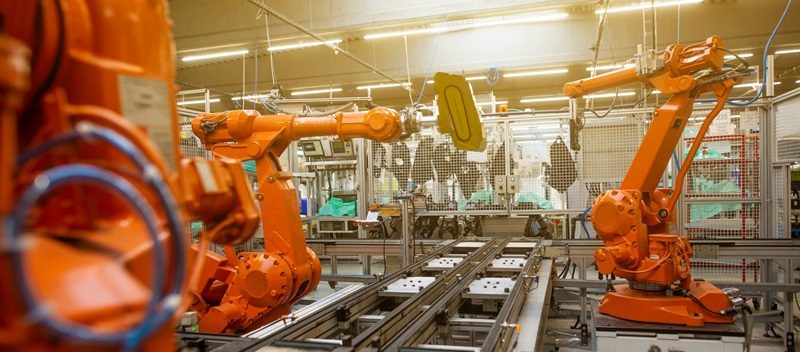In an increasingly competitive market, businesses across various industries are constantly striving for improved quality control and enhanced production efficiency. This article explores a series of technological advancements and innovative solutions that are revolutionizing the way companies approach maintenance systems, product quality checks, calibration provider selection, manufacturing quality control, robot integration, and imaging sensor technology.
An integrated learning maintenance system identifies potential faults early, avoiding more than 500 minutes of vehicle assembly disruption every year. Early fault identification in maintenance systems is crucial to avoid costly disruptions in vehicle assembly. The development of an integrated learning maintenance system has emerged as a game-changer in this area. By leveraging data analysis and machine learning algorithms, this system is capable of identifying potential faults early, minimizing assembly disruptions by more than 500 minutes annually. This breakthrough technology helps businesses save time and resources while ensuring smooth production processes.
Foundry Guarantees Product Quality With 3D Scanning Arm
Quality assurance is of utmost importance in foundry operations. To guarantee product quality, foundries are now utilizing 3D scanning arm technology. This innovative solution allows for comprehensive product quality checks, ensuring dimensional accuracy and minimizing defects. With the ability to capture detailed 3D data, foundries can address potential issues promptly, leading to improved product quality and customer satisfaction.
Overcoming Restrictions in Quality Checks with Coordinate Measuring Machine (CMM)
Fonderies Fraisse, faced with limited range checks, found a solution in the form of Coordinate Measuring Machines (CMM). CMMs offer advanced measurement capabilities, surpassing the restrictions of traditional quality checks. With CMMs, Fonderies Fraisse can now perform precise and comprehensive inspections, ensuring the highest level of quality control. This technological advancement enables the company to meet demanding quality standards and customer requirements.
Balancing Key Factors in Calibration Provider Selection
The calibration industry presents decision-makers with the challenge of balancing three critical factors: quality, lead time, and price. The selection of a calibration provider is a crucial decision that impacts the overall quality control and production efficiency of a business. Balancing these factors involves careful evaluation and consideration. Businesses must prioritize quality control while managing lead times and costs effectively. By striking the right balance, companies can secure reliable calibration services without compromising the efficiency of their operations.
AI’s Impact on Manufacturing Quality Control with Vision Systems
Artificial Intelligence (AI) is poised to revolutionize manufacturing quality control. AI-powered vision systems offer remarkable precision and speed in product inspection, surpassing human capabilities. These advanced systems can detect even the minutest defects, ensuring unparalleled product quality and defect reduction. With AI-driven advancements, businesses can enhance their quality control processes, minimizing errors, and improving overall customer satisfaction.
TwinBox Offers Compact Solution for Robot Integration in Production
The integration of production robots is a significant step in automation engineering. The introduction of RoboDK TwinBox represents the latest development in robot programming, offering a compact and efficient solution. With TwinBox, automation engineers can seamlessly integrate robots into production settings, streamlining operations and optimizing efficiency. This innovative solution opens doors for increased productivity and process optimization in manufacturing industries.
Next Generation High-Performance Global Shutter CMOS Image Sensors Launched
Teledyne e2v has announced the launch of the Emerald Gen2 CMOS image sensor family, bringing next-generation technology to the field of imaging sensors. These high-performance global shutter CMOS image sensors offer significant advancements in capturing and processing high-quality images for a wide range of applications. With enhanced sensitivity and improved noise reduction, these sensors empower businesses to achieve exceptional image quality, enabling more accurate and reliable inspection and analysis processes.
Technological advancements continue to shape and redefine quality control and production efficiency across numerous industries. From integrated maintenance systems and 3D scanning arms in foundries to the use of CMMs for comprehensive quality checks and AI-driven vision systems for precise inspections, businesses are leveraging innovative solutions to stay ahead of the competition. Furthermore, developments such as the TwinBox for production robot integration and high-performance imaging sensors like Teledyne e2v’s Emerald Gen2 CMOS image sensors further contribute to improved efficiency and quality control. By embracing these advancements, businesses can optimize their operations, ensuring superior product quality, reduced defects, and enhanced customer satisfaction.

